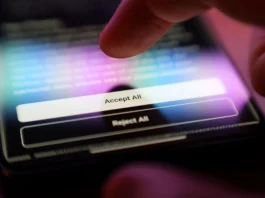A Spark of Hope Amidst Chaos
In the midst of Lebanon’s devastating humanitarian crisis, a beacon of ingenuity has emerged in the form of an “aidbot,” a chatbot designed to bring relief to displaced families. Created by mechanical engineer Hania Zataari, this groundbreaking tool is transforming how aid is distributed. As a grassroots innovation powered by WhatsApp, the aidbot exemplifies the resilience and creativity of a nation struggling against unimaginable hardship.
The aidbot is more than a digital tool; it’s a lifeline for thousands. It simplifies aid distribution, streamlines communication, and ensures that essentials like food, blankets, and medicine reach those who need them most. Amid the chaos of war and economic collapse, Zataari’s creation has become a symbol of hope, illuminating a path forward in times of despair.
The Crisis Unfolds
In October 2023, Lebanon plunged into one of its darkest chapters in recent history. The conflict began when Hezbollah launched rockets into Israel, prompting retaliation from Israeli forces. The toll has been catastrophic: nearly 4,000 people killed, over a million displaced, and countless families left to fend for themselves in a nation already grappling with an economic crisis.
Public buildings, rented spaces, and family homes quickly became makeshift shelters for those fleeing the violence. Yet, many slipped through the cracks of traditional aid systems, their needs unmet by overburdened governmental and international organizations.
Innovation Born from Necessity
Recognizing the inefficiencies of conventional aid distribution, Zataari turned to technology. Using Callbell.eu, a platform designed for customer engagement on Meta’s messaging apps, she developed the aidbot to gather and process requests. By asking straightforward questions about recipients’ needs and locations, the chatbot creates an organized database accessible to Zataari’s volunteer team.
This system eliminates the delays often caused by manual coordination. Families in need can request specific items—such as baby formula or mattresses—with the assurance that their needs will be met accurately and efficiently.
Since its inception, the aidbot has facilitated the distribution of:
78 food parcels
900 mattresses
323 blankets
This impact, though modest compared to the scale of the crisis, has brought tangible relief to displaced families in Sidon and beyond.
Stories of Resilience
One poignant example of the aidbot’s impact is the story of Khaldoun Abbas. Forced to flee his home in Najjarieh with 16 family members, Khaldoun now shares a small three-bedroom apartment in Sidon. Through the aidbot, his family secured essential items like food and blankets, providing a semblance of stability amidst the upheaval.
Tragically, Khaldoun’s home was later destroyed in an airstrike. While nothing can replace what was lost, the aidbot offered his family a lifeline during their most desperate hours.
Overcoming Challenges
Despite its success, the aidbot faces significant challenges. The demand for aid far outpaces supply, compounded by Lebanon’s ongoing financial crisis. According to UNICEF Lebanon, international relief efforts have received only 20% of the funding needed to address the crisis.
Volunteers like Bilal Merie, who assist Zataari’s efforts, emphasize the strain of limited resources. “The aidbot has made us more efficient,” says Merie, “but without broader support, we’re fighting an uphill battle.”
Why the Aidbot Matters
What sets the aidbot apart is its cultural relevance. In Lebanon, WhatsApp is a primary communication tool, making the chatbot intuitive and accessible for users. This localized approach has drawn praise from experts like John Bryant of the Overseas Development Institute, who highlights the importance of tailoring humanitarian solutions to local contexts.
However, Bryant also warns against assuming that this model can be universally replicated. Each region presents unique challenges that require careful adaptation.

Building Transparency and Trust
Zataari has made transparency a cornerstone of her initiative. A publicly accessible dashboard tracks expenditures, donations, and distributions, ensuring accountability to donors and recipients alike. This level of openness has earned the trust of Lebanese expatriates, whose donations largely fund the project.
The aidbot’s success demonstrates the potential of grassroots initiatives to fill gaps left by traditional aid systems. While it cannot resolve Lebanon’s systemic issues, it provides a template for how communities can leverage technology to address immediate needs.




